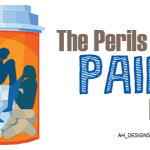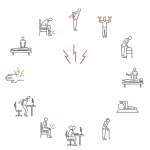 It’s estimated that 63% of regular opioid users are suffering from arthritis, despite the lack of long-term studies showing the efficacy of opioids for chronic pain.1,2 The Centers for Disease Control and Prevention guideline asserts the unknown benefits of long-term opioid use are far outweighed by the well-identified risk of opioid addiction and overdose.3
It’s estimated that 63% of regular opioid users are suffering from arthritis, despite the lack of long-term studies showing the efficacy of opioids for chronic pain.1,2 The Centers for Disease Control and Prevention guideline asserts the unknown benefits of long-term opioid use are far outweighed by the well-identified risk of opioid addiction and overdose.3
“Although prescription medications, like opioids, are effective for treating pain, when it comes to chronic pain, it’s important to provide access to additional, complementary treatments patients can use for the long term,” says Maggie Wimmer, coordinator of programs and outcomes for Public & Patient Education at the Hospital for Special Surgery (HSS) Education Institute in New York.
She notes rheumatologists have the perfect opportunity to discuss with their patients alternative and complementary options for managing chronic pain. “As simple as it sounds, many patients do not know what options are out there besides medication for treating their pain,” she says.
Alternatives to Opioids
Ms. Wimmer leads the Pain and Stress Management Program at HSS, which was launched in 2017 as a pilot in an orthopedic clinic at HSS. The program focuses primarily on mind-body techniques, such as mindful breathing, guided meditation and yoga.
Early research on the efficacy of the pilot found it was highly rated by 98% of participants and 95% of patients showed the ability to apply the techniques learned to manage their pain and stress. Through debriefing sessions, patients reported reduced pain and stress, and that they were less reliant on pain medication to manage their conditions.4
“Our programs are designed so they can be modified to meet patient needs. For example, when we were implementing meditation programs in the rheumatology clinic, we recognized that patients were struggling with pain from their stiff muscles and joints. To address this [factor], we adapted the program to focus not only on the breath, but on movement as well. The movement aspect assists in lubricating the joints to help ease their pain,” she says.
With this in mind, Ms. Wimmer and colleagues incorporated seated restorative yoga poses and a deep relaxation session that ties together the movements with breathing.
She says participants have noted that these mind-body and meditation workshops have helped them manage their pain and restore a sense of clarity and calmness. The breathing has helped reduce their stress and anxiety, which often lead to pain.
“It’s also important to consider program accessibility for patients. Some patients may live farther away and not have the means to frequently attend programs on site at the hospital,” Ms. Wimmer says. They have incorporated a weekly mindful breathing group phone call, led by a certified yoga instructor, for patients to join in [remotely] to practice their skills and better manage their pain.”



